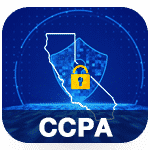It isn’t hard to believe how opening the inbox – composing the email body – hitting the send button has become customary for most businesses. Email marketers send tens of hundreds of emails in a month. These messages can turn out to be productive, or conversely disruptive for a business if your emails are irrelevant and composed of sales pitches. Sadly, the studies have already proven how this carelessness hurts brand reputation and impacts email performance. So, avoid being desperate to sell and focus on delivering value through your email campaigns.
Here are some overlooked email habits one need to get rid of while composing the emails. Replace these old practices with our verified solution that helps you to master the skills of email writing.
Let’s Dig in.
1. A Professional Yet Boring Copy
Solution: Distinguish yourself with a different tone of voice in your email.
Since your recipient’s inbox is usually clogged with hundreds of unread emails, you need to maintain a different tone of voice to stand apart from competitors. It can be a humorous tone or educational for that matter, a well-thought voice connects your readers with your organization in a deeper level.
So, the question is – how to connect with the users in a highly effective tone? The answer is pretty straight forward. Instead of considering email as an object, think of it as an individual with a personality. And, that personality is going to be yours or the person who’s going to compose the content. Now, write about how you care for your audience, write about the things that can create an emotional spark between you and your customers, and that’s all. You’ll start to reap the yield in no time. Creating content that audiences can relate to will not only deliver the message but also help build long-lasting connections.
2. An Old-Fashioned CTA
Solution: Be creative with your CTA design
Email provides an abundant opportunity for the firm to encourage their prospects to take action at ease. However, if you cannot create a convincing call-to-action, you may end up in a poor email campaign. Hence, pay more attention to your CTA, its placement in the email body, and its look. Email Campaigns are more important when you’re looking for a long-term relationship with your customers.
Here is some tips to follow while designing CTA:
- Avoid image-based CTA buttons and use only text links.
- Don’t use multiple CTA’s and ask your users to choose between them. They will likely choose none.
- Make your CTA design stand out by using bold font (large size and different color) and providing some white space surrounding the button.
- Make this button more specific to the demographic to improve the performance.
- Keep the text short and understandable while explaining the users what to do, why to do and how to do.
- Try including CTA button in the beginning of your email (within 500 pixels or first three inches).
3. Talking About Yourself ‘TOO’ Much
Solution: Don’t sound needy in your email instead add value to customer’s life.
There are cases where people go out of balance and brag about themselves too much in the email. They send lengthy emails, over-explain, and book meetings that doesn’t even require 20 minutes of real conversation. McCormack’s study at the Brief Lab, revealed that around 43% of recipients who received long emails either deleted it or ignored them.
A briefly explained email, on the other hand, describes the real purpose of the message and makes the people to read it seriously.
Follow these methods to brief your email contents:
- Provide a quick context regarding the message.
- Explain the reason for contacting them.
- State a few important piece of information in bullet points. (Although using bullet point is not mandatory).
- Tell them the next steps to take in simpler tone.
- Follow-up your audience by asking them for any queries.
Although cutting to the chase is not as easy as it seems, you can practice it by investing some time to decide what’s essential and what’s not essential for that particular recipient in that moment.
4. A Same “From” Story
Solution: Include a friendly “from” at the beginning of your email.
Generally, the “from” name will either be the name of your company or employee name. Neither of this form is friendly or relevant to recipients. Though recipient may recognize your company, most of the companies send emails for many different purposes to various people. So, they may not be relevant to their interest. Similarly, the employee name doesn’t have much impact unless the person reading the email know the employee personally. So, do not limit yourself to sending the email using typical “from” name. Make some minor adjustments to delight your recipients with the email.
Here’s a sample on how you can write ‘friendly from’:
| Company Name: Blue Mail Media | Employee Name: Robert Duke |
| • Blue Mail Media Client Services
• Blue Mail Media on Newsletter |
• Robert at Blue Mail Media
• Robert Duke, Marketing Manager |
These “friendly from” will provide additional information about the sender, and can increase your email open rates quickly.
5. A One-Word Response
Solution: Provide enough information in your every email.
Emails are meant to convey the information at ease, but that doesn’t mean you can leave a one-word reply. Sending only “Yes,” “No,” “Thanks,” “Okay,” or other single words will kill the continuation of your conversation and harms your brand reputation in an instant. It will make your recipients to backtrack and re-read the email message reluctantly.
We understand people are incredibly busy. But you have to provide enough text in your email body if you want to be courteous to your recipients, and also yourself!
For instance, type – “Yes, I’m fine with your plan of extending the project date with [Company Name] to Monday.” Such a straightforward response provides adequate information to your audience, and they can comprehend without spending much of their time.
6. Quick Reply with No Purpose
Solution: Send a well-thought reply to take your conversation forward.
There is a particular group of people who assume that replying to the email as soon as it is received, makes them stand apart from the competitors. This belief forces them to compose the message hastily and thereby sending incomplete information. In some cases, the recipients receive multiple emails one after the other where every next note add new information to the previously received email. This practice creates a mess in the reader’s inbox and consumes much of their time in putting all these messages together.
Instead of replying fast to every email you receive, take some time to construct a proper response. Focusing on sending well-thought reply will help your audience to grasp the content quickly and reduces the email overload.
Closing Note
We live in a tightly connected world where businesses can reach the prospects easily via email. But, that doesn’t mean you can connect to their heart at ease. For that to happen, you have to ditch the old-tested strategies that do no good for your brand and start exploring something new. The easy-to-follow ways mentioned here are adequate to take you towards that direction. Try them all in your next campaign and see the difference it creates.
Happy Campaigns!





